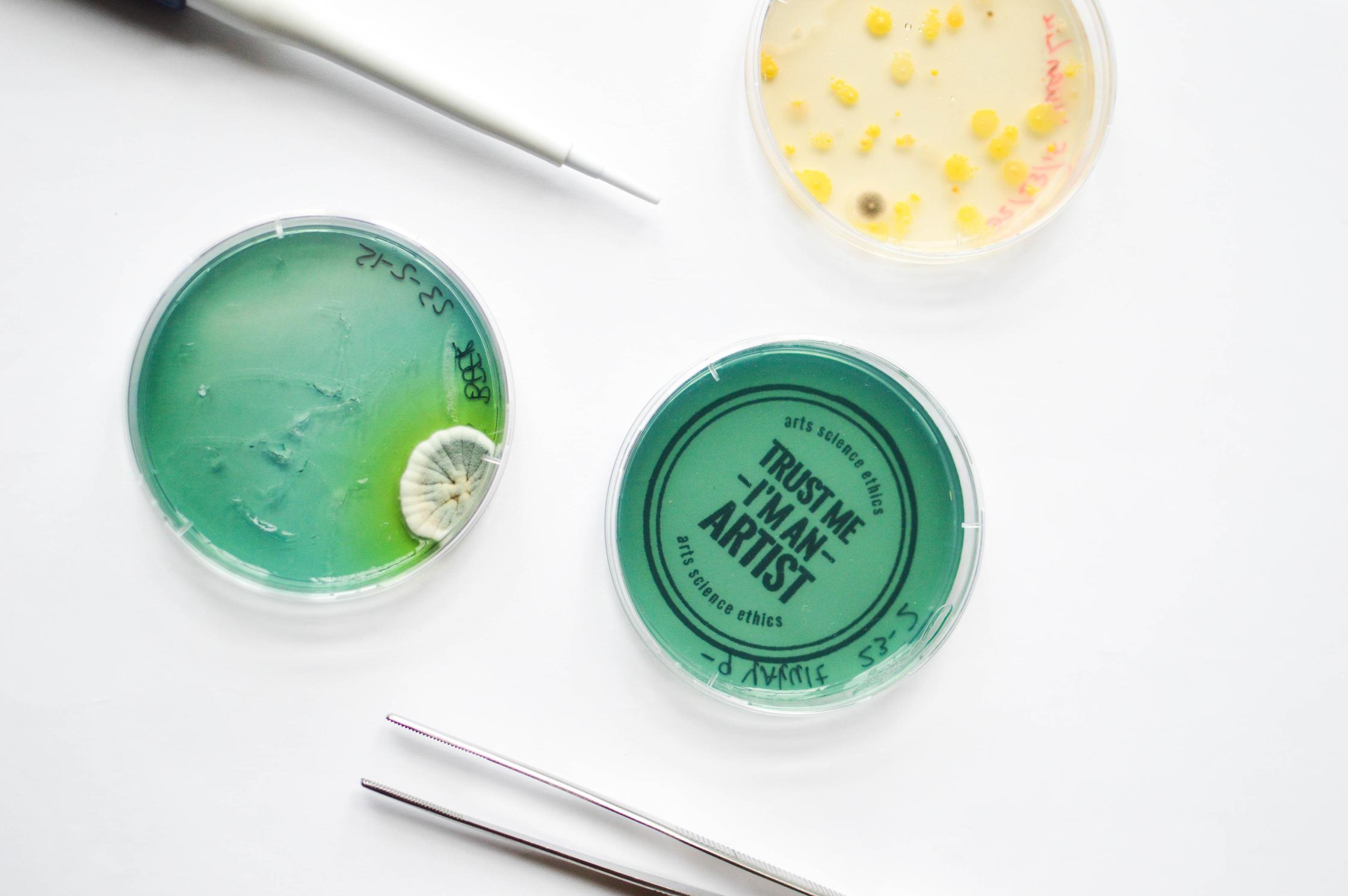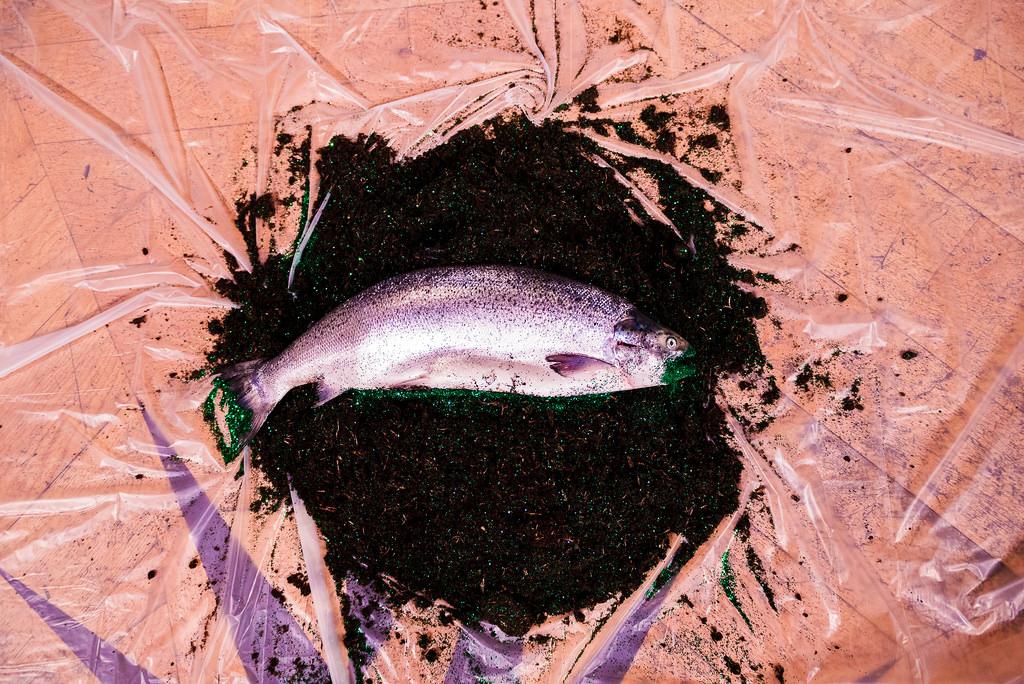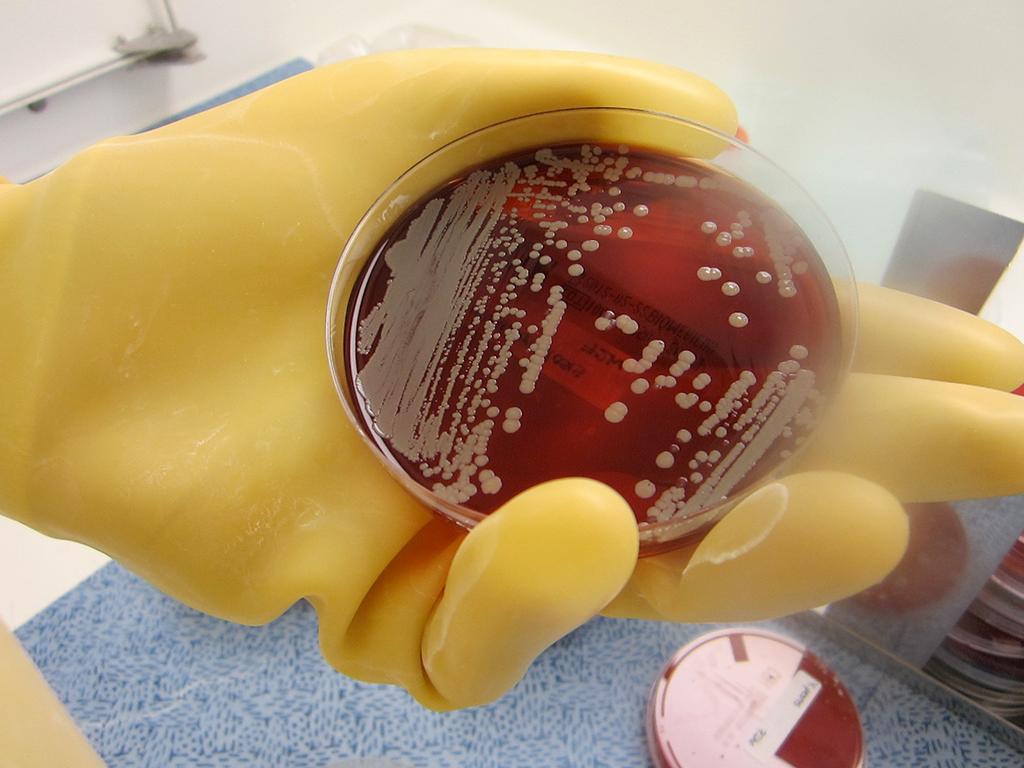The next performance in the Trust Me, I'm an Artist (TMIAA) project will take place at the transmediale festival in Berlin. TMIAA focuses on the ethical issues that occur at the intersection of art, biotechnology, and biomedicine. Waag is a lead partner within the TMIAA project and Lucas Evers, head of our Open Wetlab, works closely with our artists in residence. Because Lucas has such a unique perspective on the initiative, I recently decided to interview him. The following is a condensed account of our conversation.
“An artwork has much more to express than just words. It interacts with spectator in a different way than the exchange of oral information. It uses the full spectrum of ethical and moral experience.”
This is what Lucas Evers says to me when I ask him what is so interesting about TMIAA. As we sip our morning coffees, he explains to me how TMIAA uses art to make the ethical complexities and ambiguities within the biomedical field more tangible.
If you read a scientific abstract detailing the injection of cyanobacteria into zebra fish embryos to create a new breed of fish powered by photosynthesis, the ethics of the situation might not be readily apparent to you. However, attending an artist workshop that provides you both with the opportunity to perform the injections yourself and with the information that injected fish embryos will have a 95% mortality rate may make you consider the situation more carefully. Very few laypeople encounter the visceral ethical implications of scientific exploration in day-to-day life. Yet, through provocative artworks, the BioArtists within TMIAA hope to bring these murky ethical dilemmas to the forefront.
The line in the sand?
Artist, Špela Petrič, for instance, questioned the nature of ethics forms under current EU law. As of now, these EU ethical state that if you want to work with mammals for research, then you should first look into the possibility of using a plant instead. Petrič wondered why plants should be treated so casually. She questioned why people do not seem to think of plants as beings with integrity, and came to the conclusion that there is a valid discussion to be had about whether or not there really is such a difference between plants and animals.
Petrič's durational performance, Confronting Vegetal Otherness: Skotopoiesis, involved her interrupting the growth of watercress by blocking the light from the germinating plants with her shadow for two days. At the end of the two day period, her shadow had left the watercress limp, unhealthy, and yellow. Ethicists on the panel discussion after Petrič's performance noted that she had not technically crossed ethical boundaries. What she had done, they said, was well within the boundaries of ethical guidelines. Petrič, however, countered this critique by questioning whether the established ethics forms are necessarily right. In this way, she demonstrated that artists must be critical of established rule sets and that art brings its own assumptions to the debate.
A growing movement
But TMIAA artists aren't just interested in the political or the ethically ambiguous use of plants in scientific research. Lucas assures me that the BioArt movement is a growing one and that there is a new, less politically motivated generation simply interested in using living materials for their designs. There are artists using cellulose derived from kombucha to make fabric for clothes, for instance, and designers creating bricks out of mycelium for use in sustainable housing.
The next event within TMIAA will focus on Howard Boland's work, Cellular Propeller. Boland's work is a type of sculptural research that involves inventing bio-kinetic objects. In the Cellular Propeller project, Boland builds a small, coin-sized construct propelled by living sperm cells. Through this work, Boland hopes to question the definition of living organisms.
If you're interested in learning more about Boland's work (or TMIAA), you can visit the Trust Me, I'm an Artist website.



